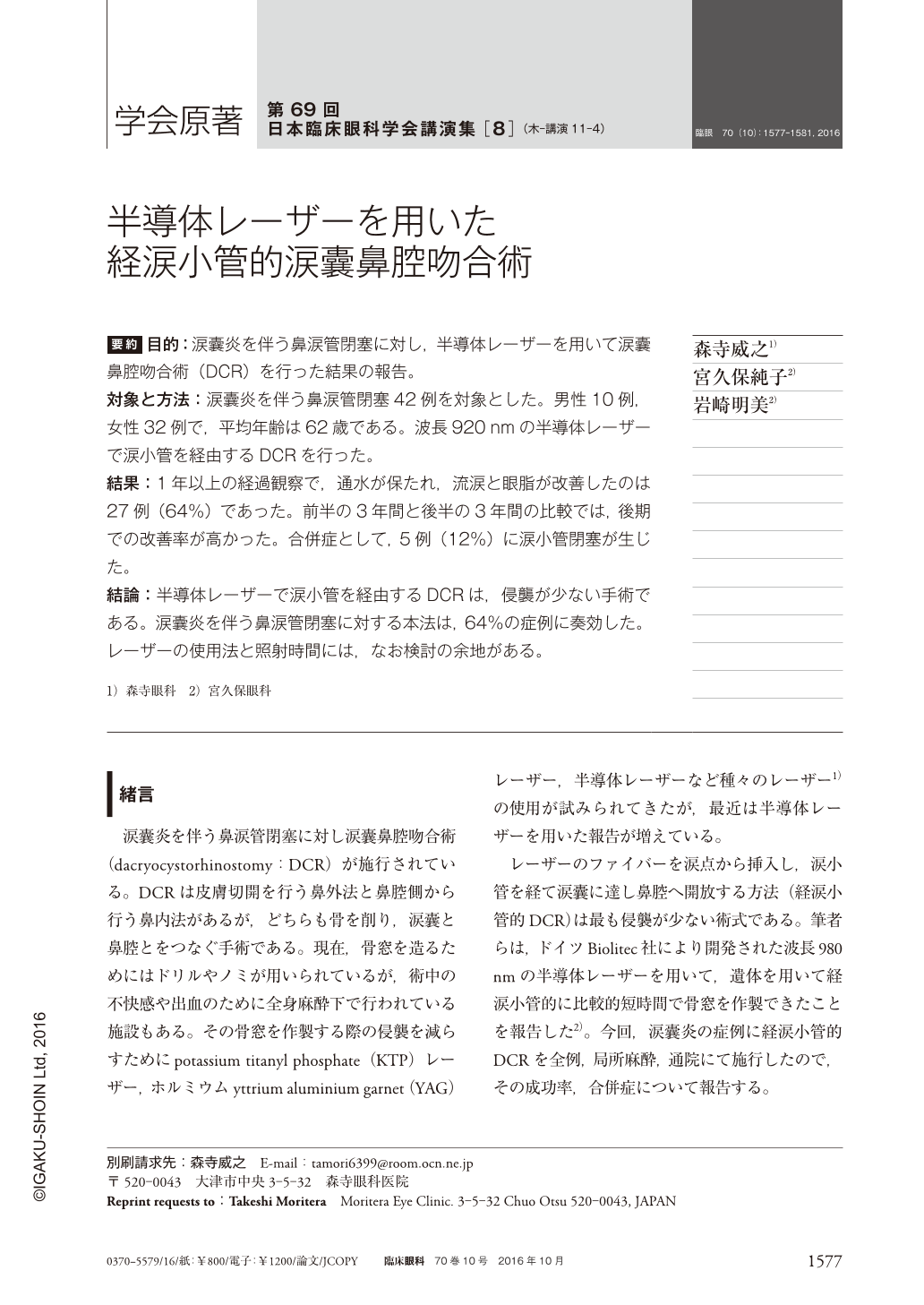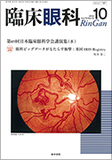Japanese
English
- 有料閲覧
- Abstract 文献概要
- 1ページ目 Look Inside
- 参考文献 Reference
要約 目的:涙囊炎を伴う鼻涙管閉塞に対し,半導体レーザーを用いて涙囊鼻腔吻合術(DCR)を行った結果の報告。
対象と方法:涙囊炎を伴う鼻涙管閉塞42例を対象とした。男性10例,女性32例で,平均年齢は62歳である。波長920 nmの半導体レーザーで涙小管を経由するDCRを行った。
結果:1年以上の経過観察で,通水が保たれ,流涙と眼脂が改善したのは27例(64%)であった。前半の3年間と後半の3年間の比較では,後期での改善率が高かった。合併症として,5例(12%)に涙小管閉塞が生じた。
結論:半導体レーザーで涙小管を経由するDCRは,侵襲が少ない手術である。涙囊炎を伴う鼻涙管閉塞に対する本法は,64%の症例に奏効した。レーザーの使用法と照射時間には,なお検討の余地がある。
Abstract Purpose: To report the outcome of treatment for nasolacrimal obstruction using diode laser through the lacrimal punctum.
Case and Method: This retrospective study was made on 42 cases of nasolacrimal obstruction. The series comprised 10 males and 32 females. The age averaged 62 years. Dacryocystorhinostomy was performed using a diode laser with the wavelength of 920 nm.
Results: After follow-up for one year or longer, 27 cases(64%)showed patent lacrimal passage with decreased discharge or epiphora. Comparison of outcome during the initial and latter 3 years showed a better outcome during the letter. Canaliculr obstruction developed in 5 cases(12%).
Conclusion: Use of diobe laser for the treatment of nasolacrimal obstruction is characterized by low invasion. It was effective in 64% of cases of nasolacrimal obstruction in adults. Improvements are needed in the handling of laser including duration of irradiation.

Copyright © 2016, Igaku-Shoin Ltd. All rights reserved.


